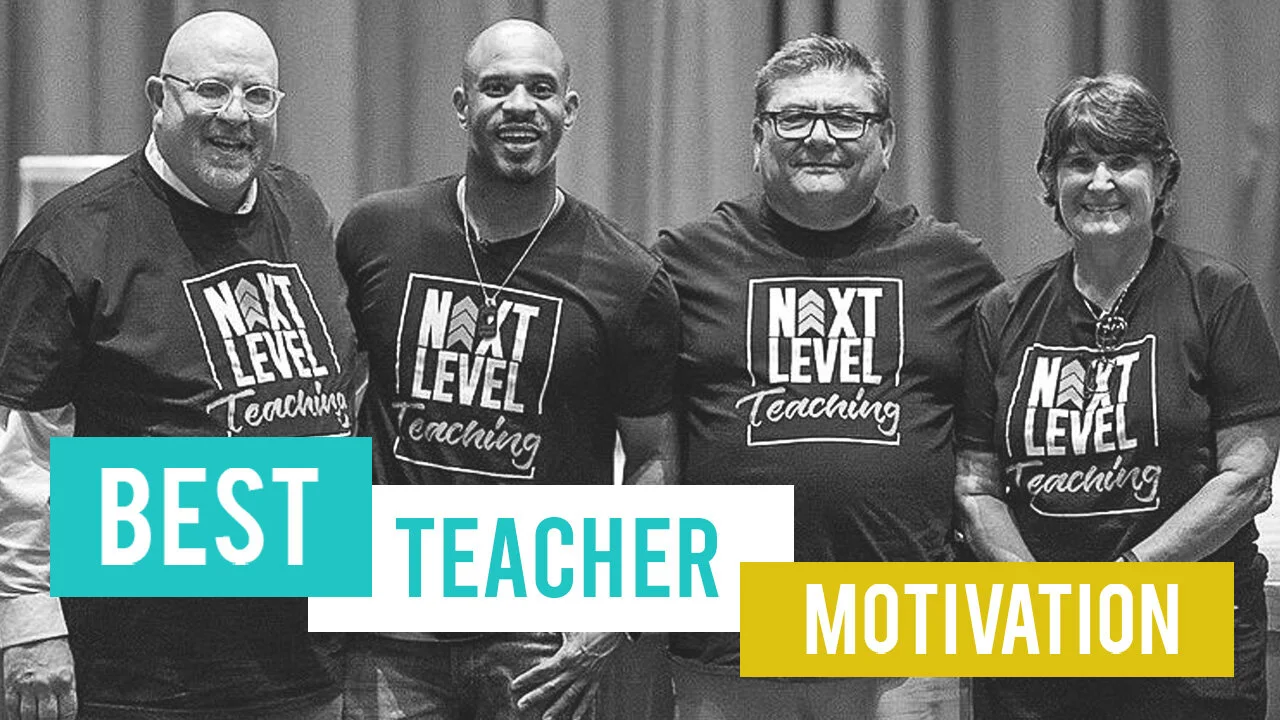changing behavior & culture one school at a time.
The success of our Schools lies in the ability to teach kids the power of Positive Behavior. PBIS, positive behavioral interventions & supports, is a framework of principles that can be used in schools to increase the desired level of important social and learning outcomes. It uses data based decision making and problem solving orientation. Studies have resulted in a significant improvement of student discipline, behavior, and even grades. The proactive strategies implemented not only promotes a positive school climate, but also a benefit to all students.
Next Level STUDENTS
We're using PBIS to empower students to become the best versions of themselves! Click below to see what happens when we facilitate a school take over!
Next Level Teachers
We've been fortunate to use PBIS when working with Educators by helping them connect with even the most troubled students.
The Depth of PBIS...
P
In the “Tao of Willie: A Guide to the Happiness in Your Heart” country music star Willie Nelson stated, “once you replace negative thoughts with positive ones, you’ll start having positive results!” Researchers have identified a massive amount of benefits that are the result of both positive thinking and a positive environment. Benefits such as an extended life span, lower levels of stress & depression, improved psychological & physical well-being, reduced cardiovascular disease, just to state a few! The process of Positive thinking will depend on the setting, but can be attained by identifying areas to change, checking yourself, being surrounded by positive people, and even simply using positive self-talk.
Imagine the effects on the overall school climate if there was a unified positive focus being placed on each student, staff member, parents, and the school environment? Students would excel in their academics and display the desired & appropriate school behavior without the fear of a large iron fist looming over their heads. It was no accident that the framework of PBIS starts with the letter “P” for positive!
B
Merriam-Webster defines the word Behavior as “the way in which someone conducts oneself; the response of an individual, group, or species to its environment.” In a school and instructional setting there is a desired behavior that is expected for students by teachers and staff. There is an assumption that some educators have, and that assumption is that all students know what is “right and wrong” and act accordingly. In today’s culture young people are encouraged to use critical thinking skills, be an individual, and independent however there needs to be a balance in how they conduct themselves and respect authority.
Kelley Prince M.A. stated in her published article “The Difference between Positive/Negative Reinforcement and Positive/Negative Punishment” that Negative reinforcement occurs when a certain stimulus is removed after a particular behavior is exhibited. The likelihood of the particular behavior occurring again in the future is increased because of removing/avoiding the negative consequence.” If a student does not read, we teach them to read. If a student does not comprehend math, we provide additional instruction and tutoring. If a child cannot swim we teach them to swim. If a student does not know how to behave, we typically punish them. PBIS utilizes strategies that focus on teaching fundamental skills and desired behavior which reduces the need to administer as much punishment.
I
Over $1 billion dollars are set aside Nationwide each year by schools that are identified as struggling by their accountability system. This is a requirement of the ESSA, Every Single Student Succeeds Act, which focuses on school improvement by transferring decision making from the federal to local educational organizations. School districts that are in the most need and display the greatest commitment to incorporating strategies, with the strongest yield, get rewarded.
Strategies, or Interventions, have been established to strengthen the level of student achievement gains and the improvement of schools. This improvement is the result of compiled research from schools and school districts from across the nation. A nonprofit network, Chiefs for Change, of diverse state and district education Chiefs has identified interventions that have promising. These results include a “focus on instructional quality informed by data, providing opportunities for educators to collaborate and share effective instructional practices based on data, and creating conditions for empowerment of school improvement. Do these interventions sound familiar? Yes, they are core components of PBIS.
S
Positive thinking and a positive environment, combined with desired behavior and effective interventions together sound ideal in the school setting, however they will not be effective without support. A genuine partnership of educators, guardians, and the community can be the foundation to bear the weight placed on each student as they enter the school building.
The architects and builders of the Roman Civilization used a keystone during construction between 1,000 B.CE. – 500 B.C. It typically was the last stone placed in an arc and represented completion. Structurally, the keystone distributed the weight down the side of blocks formed into columns. This arrangement allowed the keystone to “support” the structure and if it was removed the structure could not stand. Just like these early structures built by the Roman, Egyptian, Babylonian, Greek, and Assyrian Civilizations support is a requirement. In order to build up the overall student, and sustain them, what we do will determine what they are able to accomplish.







